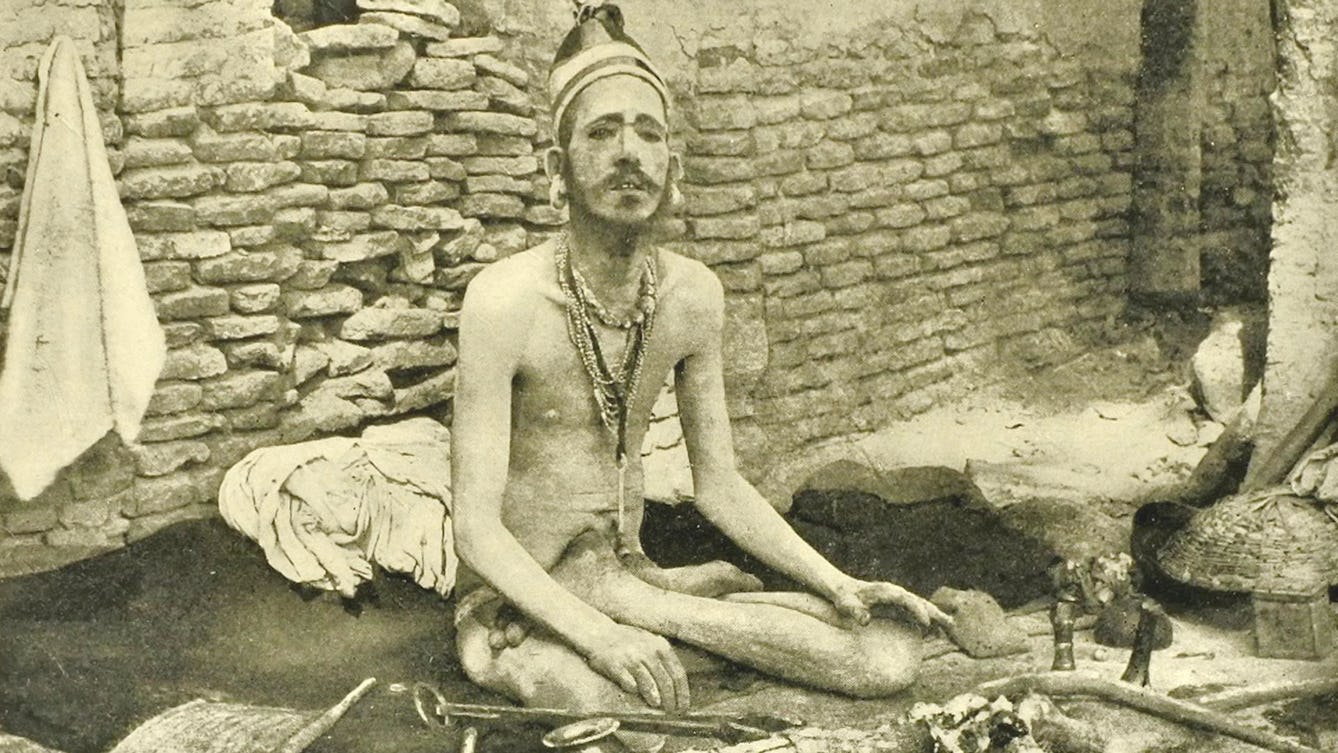Stories

- Article
Vivekananda’s journey
How a young Indian monk’s travels around the world inspired modern yoga.

- Article
The yogi as hermit, warrior, criminal and showman
How the modern world changed the life and reputation of the yogi.

- Article
Yoga gets physical
Modern yoga owes a debt to the physical culture movement that created a world obsessed with health and fitness.
Catalogue
- Books
The invasion of America : Indians, colonialism, and the cant of conquest / by Francis Jennings.
Jennings, Francis, 1918-2000.Date: 1975- Books
- Online
A new voyage to Georgia. By a young gentleman. Giving an account of his travels to South Carolina, and part of North Carolina. To which is added, a curious account of the Indians. By an honourable person. And a poem to James Oglethorpe, Esq; on his Arrival from Georgia.
Young gentleman.Date: [1737]- Books
- Online
The history of Carolina; containing the exact description and natural history of that country; Together with the Present State thereof. And a journal of a thousand miles, travel'd thro' several nations of Indians. Giving a particular Account of their Customs, Manners, &c. By John Lawson, Gent. Surveyor-General of North-Carolina.
Lawson, John, -1712.Date: [1718]- Books
- Online
The history of the American Indians; particularly those nations adjoining to the Missisippi [sic], East and West Florida, Georgia, South and North Carolina, and Virginia: containing an account of their origin, language, manners, ... With a new map of the country referred to in the history. By James Adair, ...
Adair, James, approximately 1709-approximately 1783.Date: 1775- Archives and manuscripts
Overseas Sites: America - United States
Date: c.1980Reference: WF/M/I/SL/05Part of: Wellcome Foundation Ltd








![Hepatica nobilis Mill. Ranunculaceae. Liverwort - not to be confused with the lichen of the same name. Distribution: North America. Liverwort (‘liver plant’): discontinued herbal medicine for disorders of the liver. The name and the use to which the Liverworts have been put medicinally is suggested, according to the doctrine of signatures, by the shape of the leaves which are three-lobed, like the liver. It is little used in modern herbalism but was employed in treating disorders of the liver and gall bladder, indigestion etc. It is highly toxic. Hepatica acutiloba was widely used for liver disorders in the 1880s, with up to 200,000 kilos of leaves being harvested per annum to make liver tonics - which eventually caused jaundice. Gerard (1633) calls it Hepaticum trifolium, Noble Liverwort, Golden Trefoile and herbe Trinity and writes: 'It is reported to be good against weakness of the liver which proceedeth from a hot cause, for it cooleth and strengtheneth it not a little. ' He adds ' Baptista Sardus[a Piedmontese physician fl. 1500] commendeth it and writeth that the chiefe vertue is in the root](https://iiif.wellcomecollection.org/image/B0009042/full/282%2C/0/default.jpg)
![Hepatica nobilis Mill. Ranunculaceae. Liverwort - not to be confused with the lichen of the same name. Distribution: North America. Liverwort (‘liver plant’): discontinued herbal medicine for disorders of the liver. The name and the use to which the Liverworts have been put medicinally is suggested, according to the doctrine of signatures, by the shape of the leaves which are three-lobed, like the liver. It is little used in modern herbalism but was employed in treating disorders of the liver and gall bladder, indigestion etc. It is highly toxic. Hepatica acutiloba was widely used for liver disorders in the 1880s, with up to 200,000 kilos of leaves being harvested per annum to make liver tonics - which eventually caused jaundice. Gerard (1633) calls it Hepaticum trifolium, Noble Liverwort, Golden Trefoile and herbe Trinity and writes: 'It is reported to be good against weakness of the liver which proceedeth from a hot cause, for it cooleth and strengtheneth it not a little. ' He adds ' Baptista Sardus [a Piedmontese physician fl. 1500] commendeth it and writeth that the chiefe vertue is in the root](https://iiif.wellcomecollection.org/image/B0009043/full/282%2C/0/default.jpg)